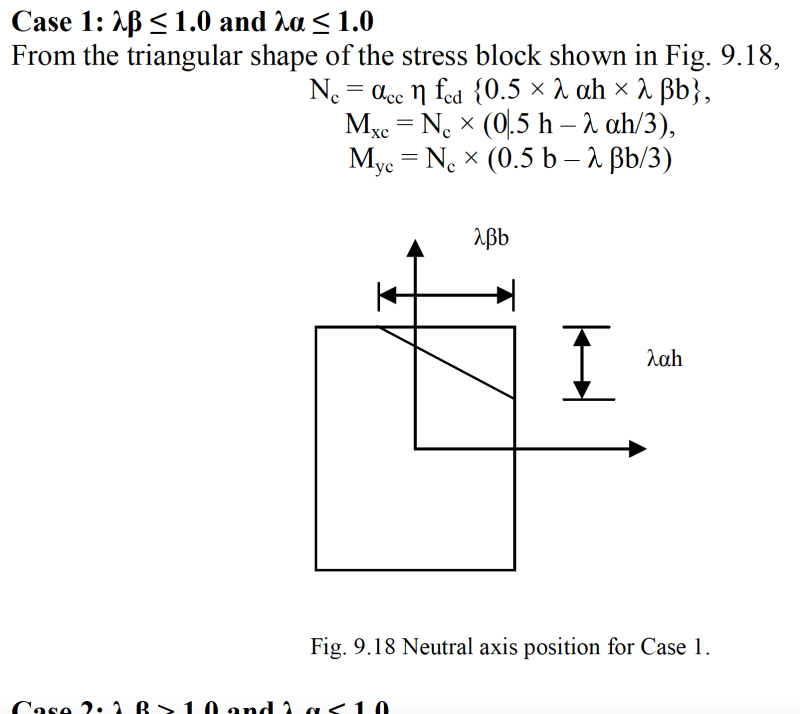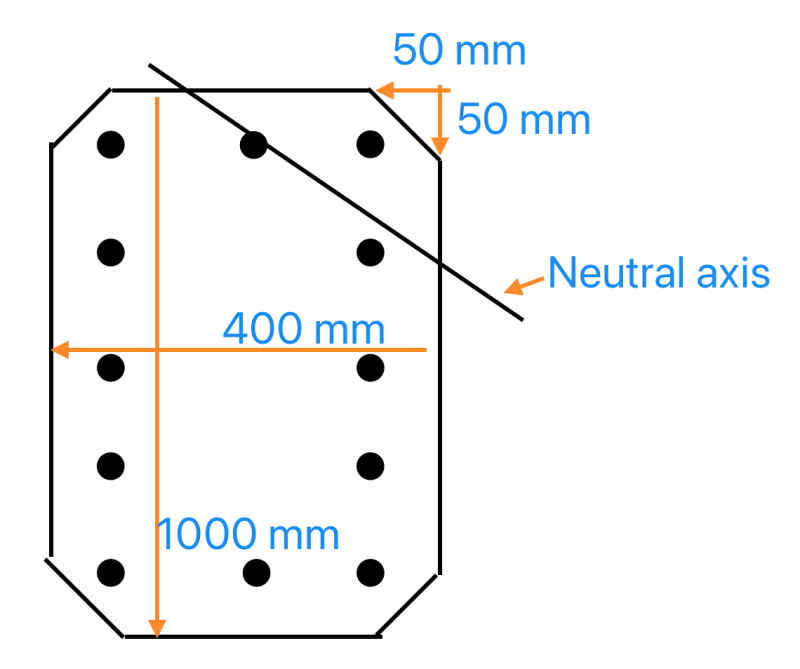Pretty Girl
Structural
I'm trying to understand and produce a design chart for chamfered columns. For biaxial bending I found the following in the book 'reinforced concrete design to eurocodes' by prab bhat (page 365). However I want to design chamfered columns. Is it possible to change the following equations to suit the chamfered area? If so how?

The one I want to design (the chamfer is too big, but this is just for illustrative purposes)

----
I guess the following equation can easily be modified as all I have to do is introduce the area of the concrete.

But for the following moment equations, how to modify it to get the Mx and My.


The one I want to design (the chamfer is too big, but this is just for illustrative purposes)

----
I guess the following equation can easily be modified as all I have to do is introduce the area of the concrete.

But for the following moment equations, how to modify it to get the Mx and My.

